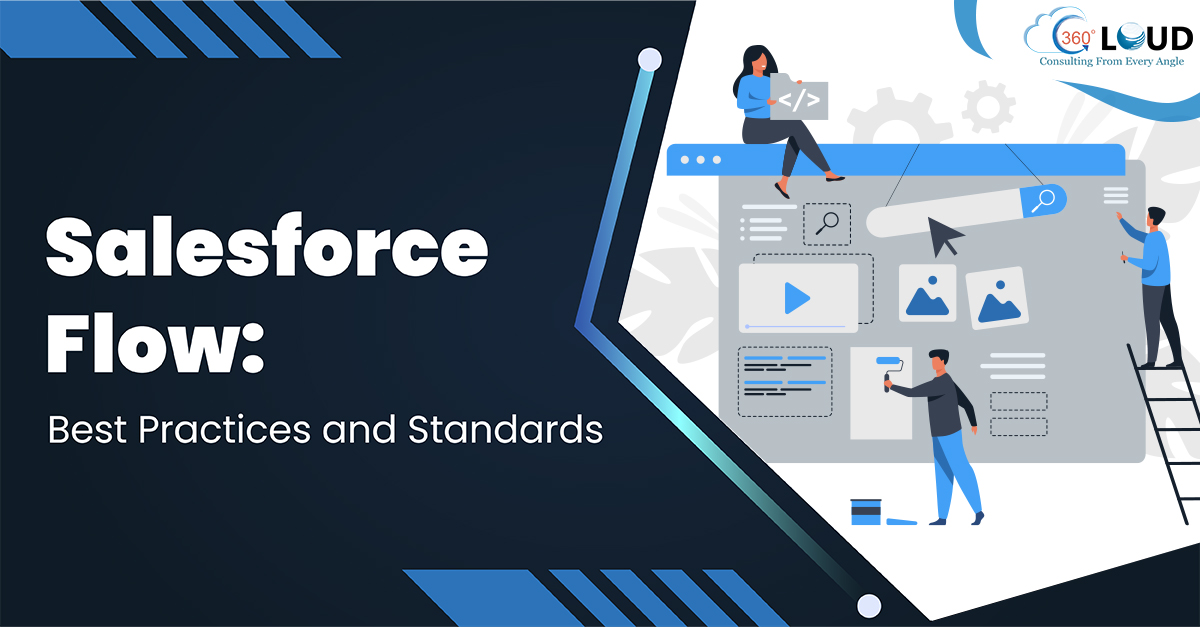Salesforce Flow has gained the reputation of being the most powerful automation tool built by Salesforce. It has become the key for uniting developers and admins to easily use Lightning Web Components and Apex.
Both admins and developers can be seen in a unique collaboration to work on Flows. But to work efficiently, it is important to follow only the best practices and standards. Following the best practices of Salesforce Flow helps teams to make sure that the Flows scale with the organization.
Best Practices of Salesforce Flow
Before starting using Salesforce Flow, it is important to have an understanding of best practices to make it scale well. Here we have listed some of the best practices of Salesforce Flow that should be followed.
1. Document your Flows
Documenting the flows helps users to understand the overall objective of the flow. It is important to solve hard problems to build a business case before starting to design flows. Documenting this information acts like breadcrumbs for maintaining automation for the long-term growth of the business.
2. Use Invoked Actions
You can use invoked actions to clean inefficient flows. Don’t be reluctant to use the reusable code to make clean and presentable flows for Salesforce. Nowadays Flow supports generic inputs and outputs. Using generic code for invocable actions helps to amplify the capabilities of Flow. You can even use one action for many flows.
3. Use Subflows for Reusable, Cleaner Ways to Manage Flows
If the flow you are using has multiple processes and branching logic, you can simply use the main flow that further divides into multiple secondary flows. Creating subflows have multiple benefits like:
- In case of any changes, you only have to make changes to one flow, instead of doing it at multiple places.
- It helps you get more concise and organized flows.
- You only need a single place to maintain org-wide behaviors
But also you need to remember that the concept of subflows doesn’t apply to Record-Triggered flows.
4. Don’t Overload Flows Using Hard-Coded Logic
It’s no news that hard-coding of logic within flows can pace down the development process and can even affect the agility of your team. So to avoid this, you should consider storing your logic in one place. In this way, the automation tools like Validation Rules, Apex, and other flows can benefit from it. You can even consider using Custom Labels, Custom Settings, or Custom Metadata in your flows in possible scenarios.
Make the Most of Salesforce Flow with Experts
When used right, there’s no better automated declarative tool for Salesforce users than Salesforce Flow. But the effectiveness of flows depends on how these are used. Following the above-mentioned best practices will help speed up the development process while decreasing the complexity for developers.
Learn more about flows by talking to our certified Salesforce developers.


